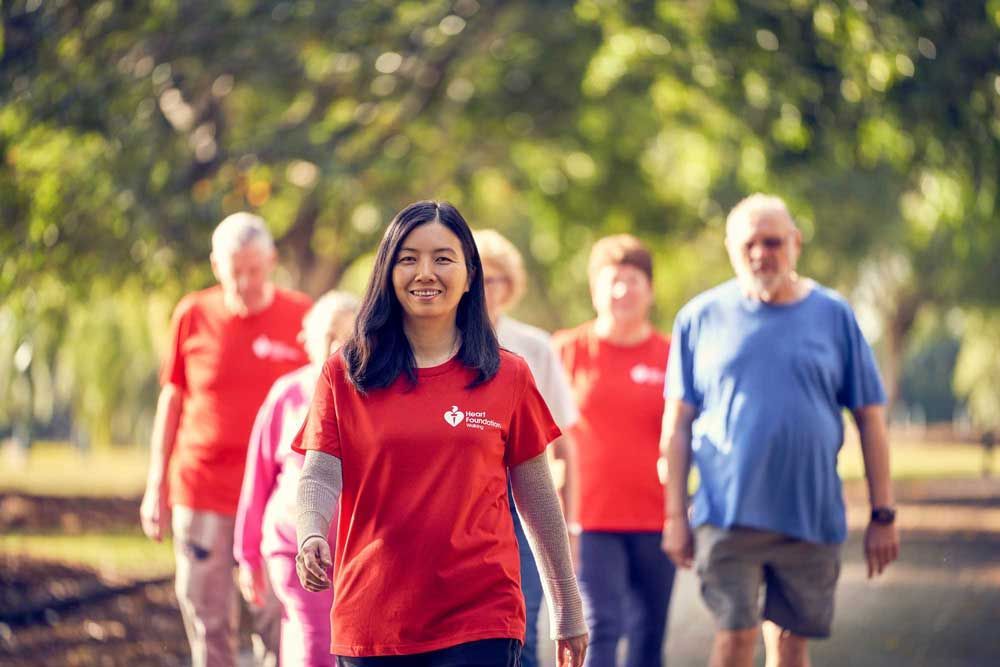Community Walkability
What kind of neighbourhood do you live in?
What kind of neighbourhood do you want to live in?
Have you ever thought about the way in which the design and features of your local neighbourhood shape the way you live, your quality of life, and health outcomes?
Do you want to live in an area where you can easily walk to be physically active:
- to access daily needs including local shops, cafes, community services, parklands and other facilities and amenities?
- for leisure and recreation purposes?
The design of our cities, towns and suburbs has a significant influence on the amount of exercise we’re likely to do each day.
Find out more about how your local neighbourhood design can impact your health:
How walkable is your neighbourhood?
Explore our Community Walkability Map
to discover local walking destinations in your neighbourhood
Assess your local area
Use our Community Walkability Checklist to identify how easy, safe, convenient and enjoyable it is to walk in your area.
Advocate for improved walkability
Sign the petition to support your local council in advocating to state and federal governments for more walkable local neighbourhoods.
Improve walkability in your local area
View our tips and guidance on simple, easy things you can do to help make your local area more walkable.
Walkable neighbourhoods
Research shows that people who live in walkable neighbourhoods are 1.5 times more likely to achieve sufficient levels of physical activity[1]. People who live in walkable neighbourhoods are also 2.8 times more likely to have a healthy cardiovascular health profile than those who live in areas where walking is unsafe, inconvenient or difficult[2].
Most people living in Australia can significantly reduce their risk of heart disease by walking 30 minutes or more most days each week[3].
Walkable neighbourhoods are those where the local environment makes it safe, comfortable and convenient to walk; where walking is enjoyable and pleasant; and where it’s something you want and choose to do.
Imagine your likelihood of walking to the local shops, library, or community service if it’s a safe and pleasant walk within a short distance of your home. This is a walkable environment that enhances neighborhood walkability—great for your heart health!
As opposed to the same scenario if those shops and services are located further away, you have to cross busy roads to get there, there's little greenery and no shade - not so walkable!
Walking should be an easy, affordable option for most people to incorporate physical activity into daily life.
Interested in finding out more about the history of road use and street space allocation?

What Australia Wants: Neighbourhood Design
In early 2025, the Heart Foundation undertook a national survey to better understand the type of neighbourhoods in which people in Australia want to live.
The results demonstrate that people living in Australia want to be able to live in neighbourhoods that offer safe, comfortable and convenient access to local services and amenities.
These results provide an evidence base to support advocacy, budget bids, business cases, and policy decisions.
Supporter's Toolkit
Our Supporters’ Toolkit has been developed to help local councils, practitioners and others engage with local communities about upcoming projects, policies and planning to help improve the walkability of local neighbourhoods. It provides short messages you can use to support walkability initiatives in your local community.
Healthy Active by Design
If you're interested in finding out more about the ways that built environments can be planned, designed and developed to support walkability, you can view our Healthy Active by Design toolkit.

The toolkit provides the latest evidence, best practice and research, and translates this into practical guidance for urban and transport planners, traffic engineers, civil works and asset managers, architects and others.
You can also let your local council and decision makers know about it, to help inform their policies and projects.

Get active with Heart Foundation Walking
Free and easy to join, Heart Foundation Walking offers support and motivation to those wanting to be more physically active or get more out of walking.
Terms of use: This material has been developed by the National Heart Foundation of Australia (Heart Foundation) for general information and educational purposes only. It does not constitute medical advice. Please consult your healthcare provider if you have, or suspect you have, a health problem. The information provided is based on evidence available at the time of publication. Please refer to the Heart Foundation website at www.heartfoundation.org.au for Terms of Use.
Disclaimer and Limitation of Liability: The Heart Foundation makes no representation or warranty that the information provided in these resources is accurate, complete, or up-to-date, nor that it is suitable for your particular circumstances. Any use of these resources is entirely at your own risk. If you have any queries or concerns about the information on this website you should seek your own independent advice and always follow the advice of your medical professional regarding walking and your activity levels. To the fullest extent permitted by law, the National Heart Foundation of Australia, its officers, and employees shall not be liable for any loss, damage, or injury arising from your reliance on the information provided. In an emergency or if you identify a safety hazard, please contact triple-zero (000) immediately.
Important Safety and Reporting Notice:
- Safety Reporting: If you discover any safety hazards while walking, please report these directly to your local council as soon as possible. The Heart Foundation does not provide a report on safety hazards or incidents to your local council.
- General Guidance: The information provided is for general guidance only and is not intended to replace professional advice or local council requirements. If you have trouble with physical activity, we advise that you seek advice from a medical or health professional to determine if walking is suitable for you. Only walk if you feel it's safe to do so. This can include consideration of the time of day, weather, heat and other factors.
